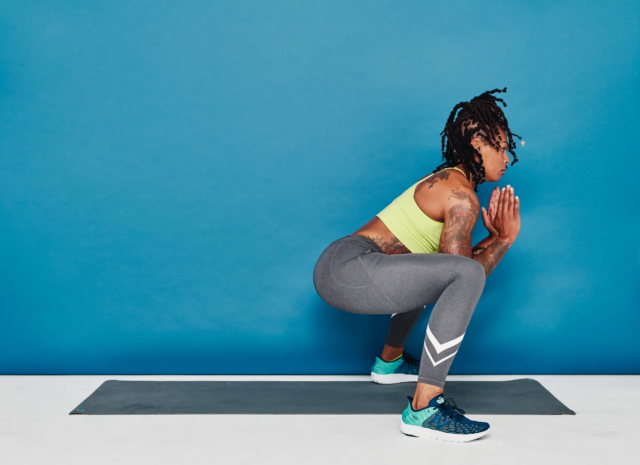
Wellness and exercise go hand-in-hand, but did you know that you could be doing more harm than good at the gym? With the amount of dangerous advice regularly given by those with an incomplete knowledge of how exercise works, it’s as easy to hurt yourself by executing a workout with poor form. Today we take a look at why good form matters so much in an exercise program.
Why we exercise

We each exercise for a variety of reasons. You may be hoping to calm anxiety, help depression, or perhaps you’d like to improve your physicality. No matter your reason, it all comes down to creating a healthier, happier body. It’s not enough to simply exercise and assume you’ll benefit physically. Whether you are actively strength training, enjoying stretching exercises like pilates and yoga, or improving your cardiovascular health, you need to exercise with good form. Otherwise, injuries and a lack of results are guaranteed to follow. In fact, this is the most common reason that people don’t achieve the results they want at the gym.
What is good form?

Good form is something of a nebulous concept, but it’s important all the same. The keys to good form are:
- Reduction of injury chance
- Working with natural body mechanics
This means that you perform the exercise using an optimal and natural pattern of movement, and that you don’t put an artificial load on a joint or muscle in a way the body never would move naturally. In turn, this means no unnatural stress or twisting on your joints. When your joints are all controlled and moving as intended, the risk of injury is considerably lower.
This is why you should avoid working out past your limits. Squeezing out that last rep at the expense of good form often means using the wrong muscles to get the job done. The outcome becomes the focus instead of the process, and injuries can soon follow.
Will I still get results?

By working out with poor form, you will not achieve the results you want. If you change the role your muscles are meant to play in a specific lift, you effectively stop training the muscle you are targeting. Remember that every movement we perform can have muscles performing three roles: agonist, synergist, or antagonist.
- Agonists are the muscles we’re targeting in the move
- Synergists support the movement, like a chest or back muscle stabilizing your arm
- Antagonists are the muscles that have to relax to allow the movement to happen
When good form is practiced, we have stability from the correct synergists and antagonists while directly engaging the correct agonist. When we work without good alignment, however, the wrong muscles take over as agonists, dragging an incorrect set of synergists and antagonists into the mix and overloading joints in the process.
While it may feel like you are still achieving your goals, you’ve gone from targeted exercises to a random and haphazard workout that may not be targeting anything at all. At best, you will see slowed muscle growth and have to work harder for less. At worst, you will spend time out with an injury, develop muscular imbalances that will hurt your joints over time, or directly damage your joints. Over time, you can destroy cartilage and lead to severe injuries and reduced joint mobility.
Weight training is prone to bad form

Load-bearing exercise is incredibly important to keep a healthy body, yet the weight training arena is rife with exercises done with bad form. In part, this comes from a hyper-focus on things like weight goals instead of the training and discipline needed to ensure injuries are not occurring. Here are three common strength training form issues, but there are many more. Any exercise where weaker larger muscle groups can ‘hand off’ the load to smaller muscles can risk poor form. The standing dumbbell fly discussed on this site, for example, can easily pick up bad form.
Bad form in sport and daily life

It’s as common to see people using poor form in controlled stretches as it is when using weights. Many running and cycling injuries are caused by gait issues causing wear-and-tear on the wrong body parts, too. Sometimes, we don’t even realize the issues exist. This is why expert help is sometimes needed to fix the issue.
Most of us favor one side of the body, and it is frighteningly easy for the dominant side to start ‘taking over’ work that the weaker side should do. This can be exacerbated by issues like poor posture, desk jobs, and other lifestyle habits. Clues can be as subtle as a tiny patch of extra wear on one side of your shoes, or as obvious as an aching back after a day at work. If you’re experiencing pain day-to-day, or in your favorite activity, don’t be afraid to ask for help.
Avoidance is easier than correction

As with many aspects of life, it’s easier to never learn a bad habit than to try and correct it later. Once your body has become used to doing something, even the ‘wrong’ way, it can be difficult to correct the mind and muscle imbalance that is now ingrained in your psyche.
If you happen to have personal anatomy or an injury history that has led to poor form being automatic, you may not be aware of it. This is why using a trainer or coach is invaluable. If you aren’t able to work with a trained professional who can spot gait and form issues, at least make sure to put your focus on finishing each exercise with good form, and learning how to do the move properly before you begin to load up on weight or distance.
Good form is the key to exercise enhancing your life, not leading to pain and injury, so it’s worth learning to do it with care and consistency. Remember, too much exercise is as bad as too little.








